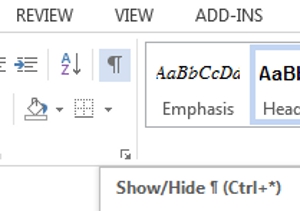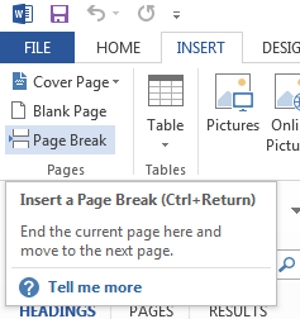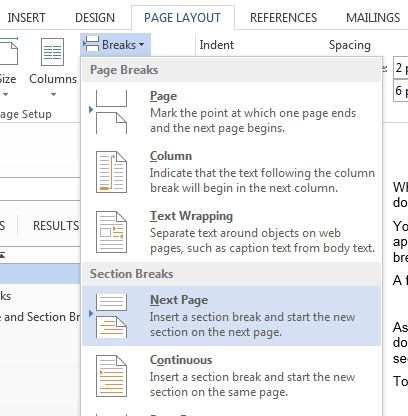- 3-minute read
- 24th November 2016
Adding Page and Section Breaks in Microsoft Word
When wanting to start something on a new page in Microsoft Word, many people simply hit ‘Enter’ repeatedly until a new page appears. This is a bad idea for two reasons:
- Any edits or formatting changes you later make will mean that text before the page break could go out of alignment, leaving you with an untidy document
- Microsoft Word already offers a quick, simple and clean way of adding page breaks at the touch of a button
Thus, if you want a professional-looking document, knowing how to use Microsoft Word’s page and section breaks is essential.
Page Breaks
A ‘page break’ is a break in your document that lets you start typing on a new page. Even better is that, in Word 2007 or later, a basic page break can be added with very little effort:
- Place the cursor where you want a page break in your document
- Go to the ‘Insert’ tab on the main ribbon in Microsoft Word
- Click on ‘Page Break’ in the ‘Pages’ box

Inserting a page break.
The same effect can be achieved using the ‘Breaks’ menu in the ‘Page Layout’ tab, but this approach also offers additional options for formatting breaks in your document.
Section Breaks
One of the aforementioned additional options is adding a ‘section break’. Section breaks are useful if you want to apply specific formatting to different parts of your document, such as headers or distinct page numbering styles. To add a section break between pages:
Find this useful?
Subscribe to our newsletter and get writing tips from our editors straight to your inbox.
Subscribe to Beyond the Margins and get your monthly fix of editorial strategy, workflow tips, and real-world examples from content leaders.
- Go to the ‘Page Layout’ tab on the main ribbon in Microsoft Word
- Open the dropdown ‘Breaks’ menu via the ‘Page Setup’ box
- Click ‘Next Page’ under ‘Section Breaks’

The ‘Breaks’ menu.
You can also add a section break in the middle of a page by selecting ‘Continuous’ from this menu. This is handy if you want to apply different formatting options to a single page, but not usually required in an academic document.
Editing Page and Section Breaks
It’s sometimes hard to see where page and section breaks are when editing a document. However, this can be remedied by clicking the ‘Show/Hide Paragraph Marks’ button (¶) in the ‘Paragraph’ section of the ‘Home’ tab.

This will make page and section breaks in your document visible, along with carriage returns and spaces between words. You can then move, delete or edit around breaks as required.






